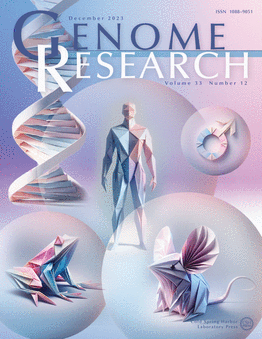食草动物分子约束的趋同性放松揭示了肝脏和肾脏功能在哺乳动物饮食中不断变化的作用
IF 6.2
2区 生物学
Q1 BIOCHEMISTRY & MOLECULAR BIOLOGY
引用次数: 0
摘要
哺乳动物的饮食类型和相关适应性多种多样。了解这些适应性背后的基因组机制可为改善人类健康提供启示。饮食基因组比较研究采用分类学限制分析或简化饮食分类,可能会降低检测与饮食进化相关的分子趋同的能力。在这里,我们利用 80 个哺乳动物物种的定量肉食得分--饮食中动物蛋白质含量的指标--来检测基因相对进化率与饮食变化之间的显著相关性。我们发现了六个基因--ACADSB、CLDN16、CPB1、PNLIP、SLC13A2 和 SLC14A2--在肉食性评分变化的同时,其进化限制也发生了显著变化,在进化出更多草食性食物的品系中,这些基因的进化限制变得更少。我们进一步研究了与饮食进化相关的生物功能,观察到与氨基酸和脂质代谢、生物氧化和小分子转运相关的通路随着食草物种的增加而减少了净化选择。肝脏和肾脏功能也随着饮食结构的变化而受到类似的限制。我们的研究结果表明,这些功能对动物物质的消耗非常重要,但随着草食性的增加,其重要性也在降低。因此,在这些组织中表达的基因在草食性更强的种系中经历了进化限制的放松。本文章由计算机程序翻译,如有差异,请以英文原文为准。
Convergent relaxation of molecular constraint in herbivores reveals the changing role of liver and kidney functions across mammalian diets
Mammalia comprises a great diversity of diet types and associated adaptations. An understanding of the genomic mechanisms underlying these adaptations may offer insights for improving human health. Comparative genomic studies of diet that employ taxonomically restricted analyses or simplified diet classifications may suffer reduced power to detect molecular convergence associated with diet evolution. Here, we use a quantitative carnivory score—indicative of the amount of animal protein in the diet—for 80 mammalian species to detect significant correlations between the relative evolutionary rates of genes and changes in diet. We have identified six genes—ACADSB, CLDN16, CPB1, PNLIP, SLC13A2, and SLC14A2—that experienced significant changes in evolutionary constraint alongside changes in carnivory score, becoming less constrained in lineages evolving more herbivorous diets. We further consider the biological functions associated with diet evolution and observe that pathways related to amino acid and lipid metabolism, biological oxidation, and small molecule transport experienced reduced purifying selection as lineages became more herbivorous. Liver and kidney functions show similar patterns of constraint with dietary change. Our results indicate that these functions are important for the consumption of animal matter and become less important with the evolution of increasing herbivory. So, genes expressed in these tissues experience a relaxation of evolutionary constraint in more herbivorous lineages.
求助全文
通过发布文献求助,成功后即可免费获取论文全文。
去求助
来源期刊

Genome research
生物-生化与分子生物学
CiteScore
12.40
自引率
1.40%
发文量
140
审稿时长
6 months
期刊介绍:
Launched in 1995, Genome Research is an international, continuously published, peer-reviewed journal that focuses on research that provides novel insights into the genome biology of all organisms, including advances in genomic medicine.
Among the topics considered by the journal are genome structure and function, comparative genomics, molecular evolution, genome-scale quantitative and population genetics, proteomics, epigenomics, and systems biology. The journal also features exciting gene discoveries and reports of cutting-edge computational biology and high-throughput methodologies.
New data in these areas are published as research papers, or methods and resource reports that provide novel information on technologies or tools that will be of interest to a broad readership. Complete data sets are presented electronically on the journal''s web site where appropriate. The journal also provides Reviews, Perspectives, and Insight/Outlook articles, which present commentary on the latest advances published both here and elsewhere, placing such progress in its broader biological context.
 求助内容:
求助内容: 应助结果提醒方式:
应助结果提醒方式:


